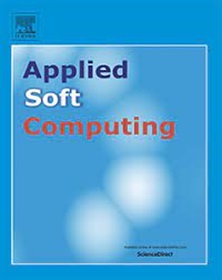Detail-aware semantic segmentation network for brain tumor MRI images combining multi-frequency directional filtering and lifting wavelets
IF 6.6
1区 计算机科学
Q1 COMPUTER SCIENCE, ARTIFICIAL INTELLIGENCE
引用次数: 0
Abstract
Brain tumors segmentation in Magnetic Resonance Imaging (MRI) images poses significant challenges owing to the uncertain location and size of the tumors, the difficulty in describing their boundaries, and the fuzzy demarcation of diseased tissues. Although U-Net and its recent variants have emerged as leading models for semantic segmentation in medical imaging, they still face structural limitations. These limitations cause the erosion of detail information during downsampling and poor performance in segmenting small lesions when handling targets of varying sizes, indicating a lack of detail handling capability. To counteract these issues, we designed a segmentation model that enhances detail features using frequency information. To reduce the loss of feature information during downsampling, we developed a downsampling module based on lifting wavelets. By lifting wavelets to group and integrate features according to frequency from high to low, we reduce feature resolution while enhancing information transmission and minimizing feature information loss. In our designed multi-frequency directional filtering edge feature extraction module, we extract low-frequency and high-frequency features and construct a dual-channel multi-directional filtering combination. This combination extracts directional information from low-frequency and high-frequency features separately, increasing the multi-angle directional information of the features and enriching the detailed information such as direction and position within the features. On the BraTS2018, BraTS2020, and BraTS2024 brain tumor datasets, our model demonstrated optimal results compared to 14 other advanced models. The average Dice Similarity Coefficients are 78.48 %, 79.80 %, and 74.35 %, while the 95th percentile Hausdorff Distances are 5.75, 6.60, and 7.72. Our code link is https://github.com/Eric-H8/BraTS_Seg_Model.
结合多频方向滤波和提升小波的脑肿瘤MRI图像细节感知语义分割网络
由于脑肿瘤的位置和大小不确定、肿瘤边界难以描述以及病变组织的界限模糊,在磁共振成像(MRI)图像中对脑肿瘤的分割提出了重大挑战。尽管U-Net及其最近的变体已成为医学成像中语义分割的领先模型,但它们仍然面临结构限制。这些限制导致下采样过程中细节信息的侵蚀,以及在处理不同大小的目标时分割小病变的性能不佳,表明缺乏细节处理能力。为了解决这些问题,我们设计了一个使用频率信息增强细节特征的分割模型。为了减少下采样过程中特征信息的丢失,我们开发了一种基于提升小波的下采样模块。通过提升小波,根据频率由高到低对特征进行分组和积分,在降低特征分辨率的同时增强信息的传输,最大限度地减少特征信息的损失。在我们设计的多频方向滤波边缘特征提取模块中,我们提取了低频和高频特征,构建了一个双通道多向滤波组合。该组合分别从低频和高频特征中提取方向信息,增加了特征的多角度方向信息,丰富了特征内部的方向、位置等详细信息。在BraTS2018, BraTS2020和BraTS2024脑肿瘤数据集上,与其他14种先进模型相比,我们的模型显示出最佳结果。平均Dice Similarity Coefficients分别为78.48 %、79.80 %和74.35 %,而第95百分位Hausdorff distance分别为5.75、6.60和7.72。我们的代码链接是https://github.com/Eric-H8/BraTS_Seg_Model。
本文章由计算机程序翻译,如有差异,请以英文原文为准。
求助全文
约1分钟内获得全文
求助全文
来源期刊

Applied Soft Computing
工程技术-计算机:跨学科应用
CiteScore
15.80
自引率
6.90%
发文量
874
审稿时长
10.9 months
期刊介绍:
Applied Soft Computing is an international journal promoting an integrated view of soft computing to solve real life problems.The focus is to publish the highest quality research in application and convergence of the areas of Fuzzy Logic, Neural Networks, Evolutionary Computing, Rough Sets and other similar techniques to address real world complexities.
Applied Soft Computing is a rolling publication: articles are published as soon as the editor-in-chief has accepted them. Therefore, the web site will continuously be updated with new articles and the publication time will be short.
 求助内容:
求助内容: 应助结果提醒方式:
应助结果提醒方式:


